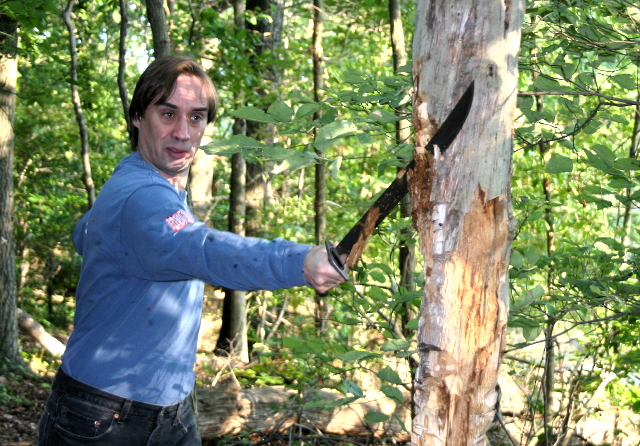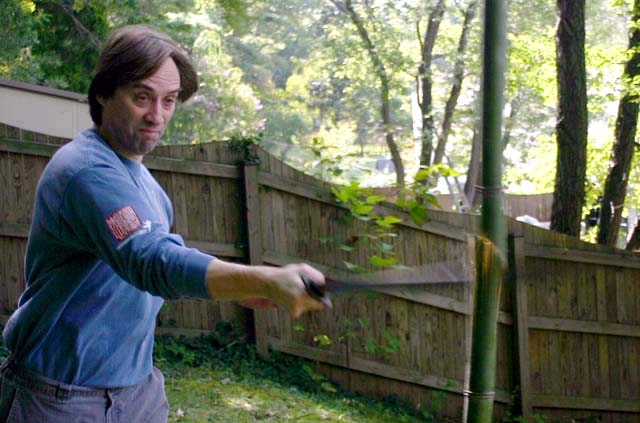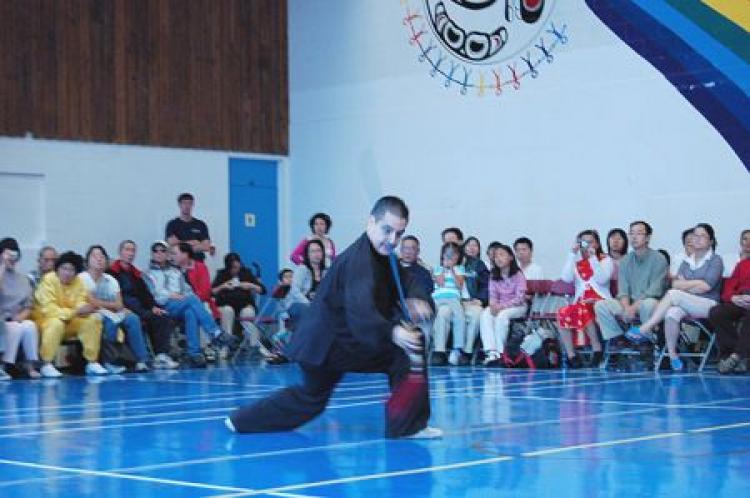Testing Mongol Saber, made by Vince Evans

Notes on design
Philip Tom worked out the design as a combo of the likely elements that one might have seen in the sabers carried by the various horsemen who served in the Mongol ranks. Given that most of the excavated material is incomplete: a blade with guard here, one with a partial hilt there, and various bits in between, Philip drew on several source to complete the whole. A list of this sources is provided below-
The blade proportions and shape of guard and tuncou seen on the fragmentary saber with Armenian inscriptions excavated in the Urals, formerly in the possession of the Soviet Academy of Sciences (Leningrad branch), and published by Djanpoladian and Kirpicnikov in "Mittelalterlichen Saebel mit einer armenischen Jnschrift, gef. im subpolaren Ural" (GLADIUS, Vol. X, pp 15-23). Phil, however, opted for an unfullered blade x-section.
The relative lack of distal taper which Evans incorporated into the blade design is a feature confirmed by examination of numerous sabers, excavated on the Hungarian and north Caucasian plains. This accounts for the extremely tip-heavy balance of these weapons.

Historical Design Authenticity - 100%. This saber was designed by Philip Tom, a well know expert in the field. That alone would be enough for most to feel confident in the historical accuracy of any Continental Asian saber, but I can add that this saber closely resembles those discovered at different archeological sites in Russia, including those found at the site of the first Russian-Mongol battle at Kalka River in 1223 (The details of which finds were used to design which parts of this saber are listed below). Beyond the overall accuracy of the blade form & shape of the fittings, I was quite happy to see that the blade's cross-section geometry was also right on, being polished in what is commonly referred to as a a "clamshell" or "apple seed" shape. This shape provides for a blade that is both adequately sharp but also strong enough to endure the rigors of cutting harder materials.
Rating - Very Good.
Solo Basic Cuts & Form Practice Test

I couldn't use my usual set of common basic dao cuts for testing this saber for the simple reason that it is balanced for use on horse back, not on foot. So before I started swinging it about in earnest, I took some time to do a little research on the use of saber from the saddle. Obviously, cutting while on horse back is restricted by the need not to hurt one's mount. So, for example, there are no horizontal cuts to the front, nor upward sweeping diagonal cuts from the left. Also chopping cuts will have to complete their motion before traveling low enough to possibly strike the head of one's horse's. One also has to sit with the left shoulder forward. So when I tested this saber, I used primarily two cuts; a high pi cut aimed at head level & an upward sweeping liao cut from my right side. Though I am not familiar with using a saber balanced for mounted use, I found this saber easy to use. It is balanced with more weight toward the tip than saber for use on foot, as are other Qing period examples I have examined, but not is much that it is difficult to wield or cut with. In short, the balance & handling are just what is required from use on horseback.
Hard Cutting Test.

The locally grown bamboo I use for cutting practice has a tendency to splinter when cut, making it a bit more challenging to cut. The last 2 summers have been rather dry, making this even more the case, yet this saber easily sliced thru old growth, green bamboo 2" in diameter.
Read more: forum.grtc.org
See also Vince Evans Bladesmith

